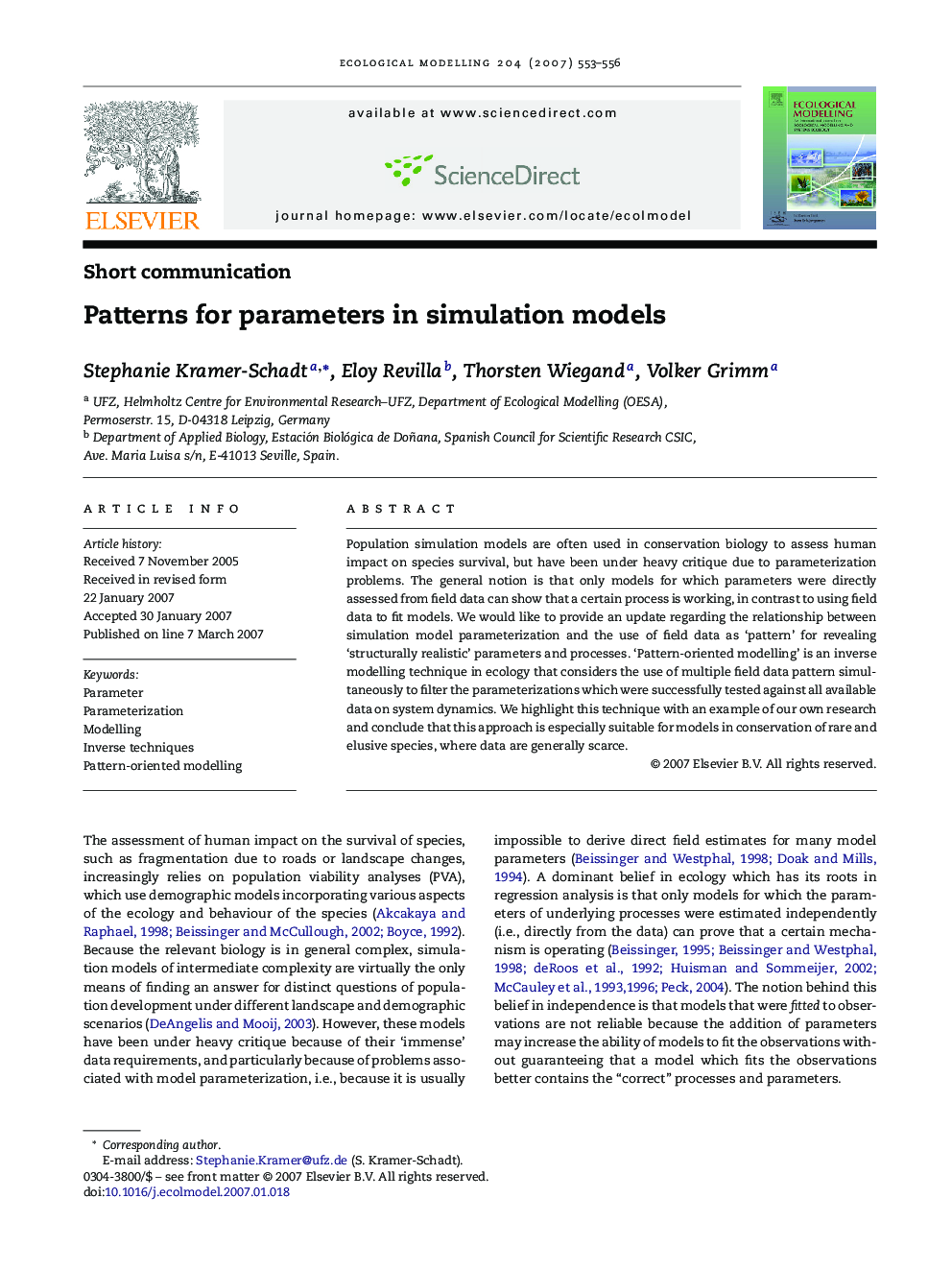| Article ID | Journal | Published Year | Pages | File Type |
|---|---|---|---|---|
| 4378381 | Ecological Modelling | 2007 | 4 Pages |
Abstract
Population simulation models are often used in conservation biology to assess human impact on species survival, but have been under heavy critique due to parameterization problems. The general notion is that only models for which parameters were directly assessed from field data can show that a certain process is working, in contrast to using field data to fit models. We would like to provide an update regarding the relationship between simulation model parameterization and the use of field data as 'pattern' for revealing 'structurally realistic' parameters and processes. 'Pattern-oriented modelling' is an inverse modelling technique in ecology that considers the use of multiple field data pattern simultaneously to filter the parameterizations which were successfully tested against all available data on system dynamics. We highlight this technique with an example of our own research and conclude that this approach is especially suitable for models in conservation of rare and elusive species, where data are generally scarce.
Related Topics
Life Sciences
Agricultural and Biological Sciences
Ecology, Evolution, Behavior and Systematics
Authors
Stephanie Kramer-Schadt, Eloy Revilla, Thorsten Wiegand, Volker Grimm,
